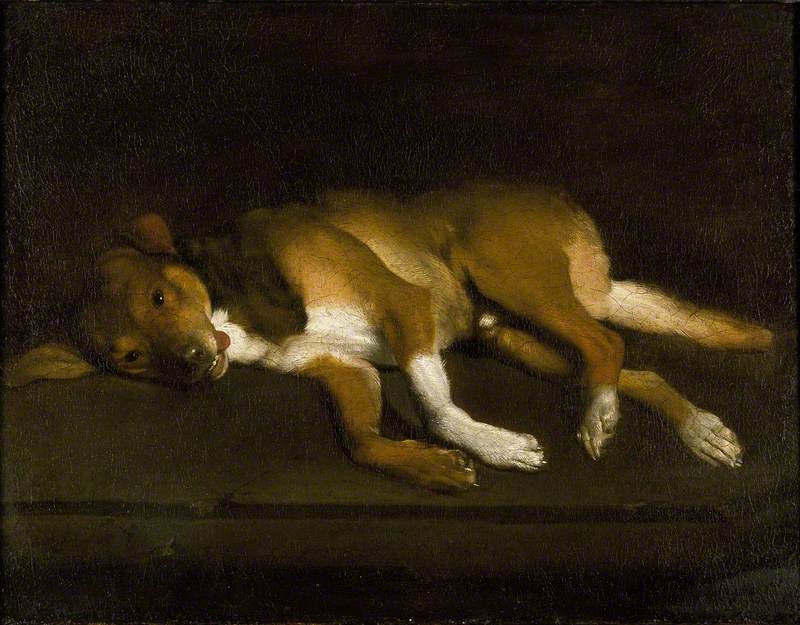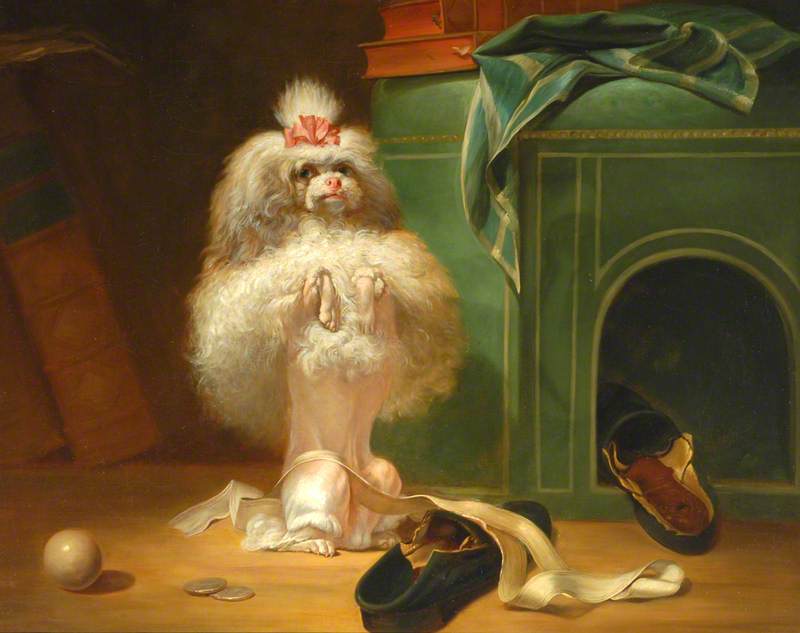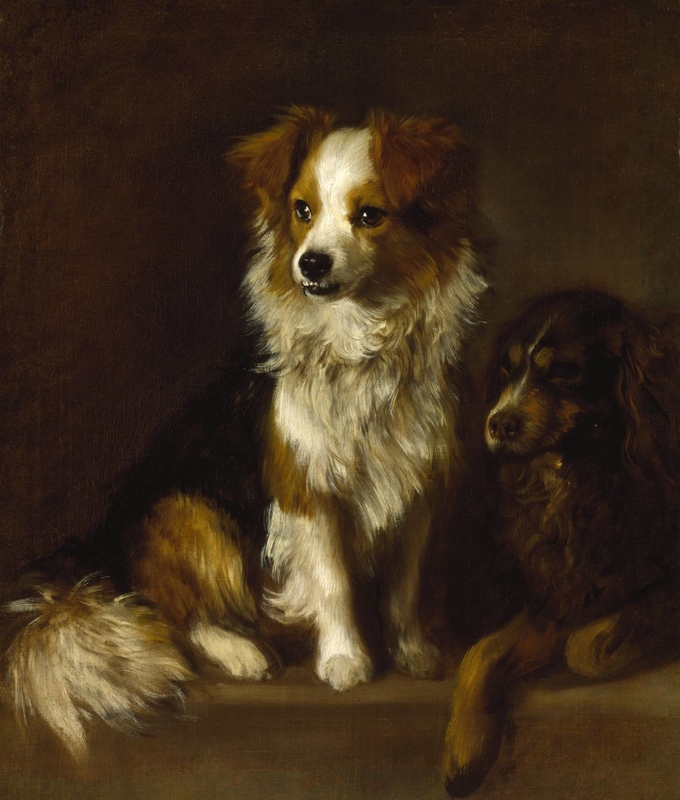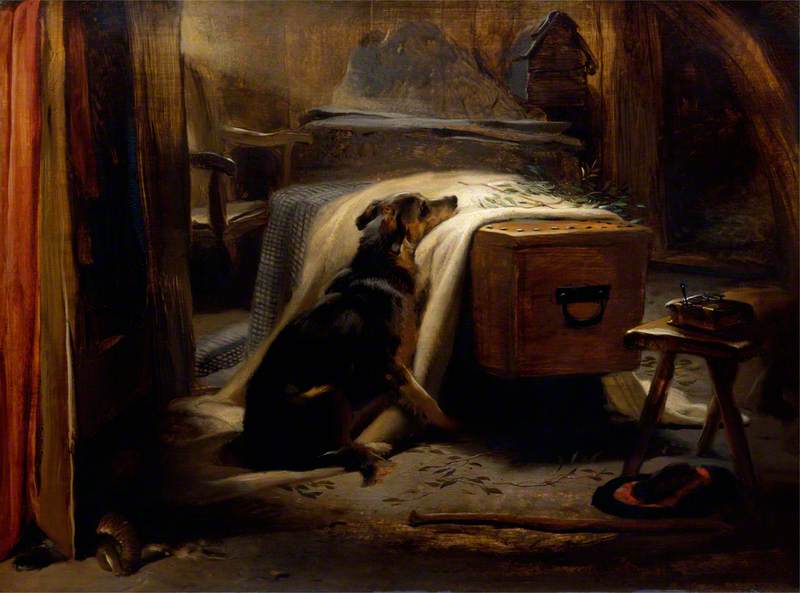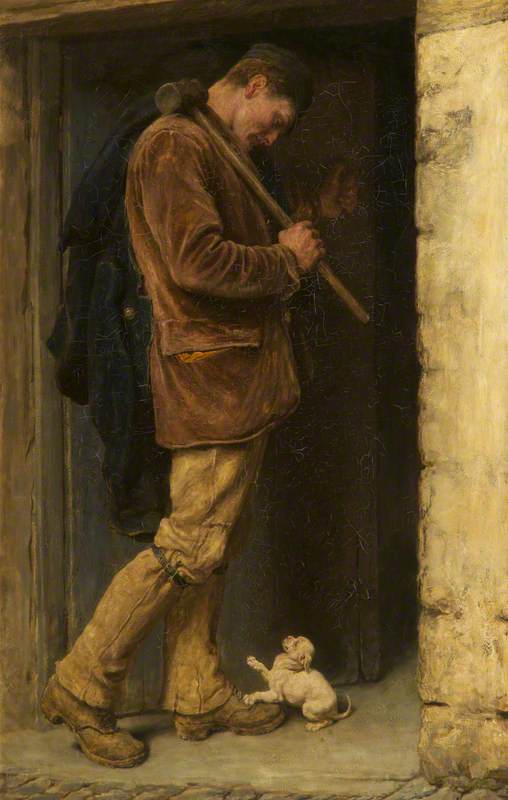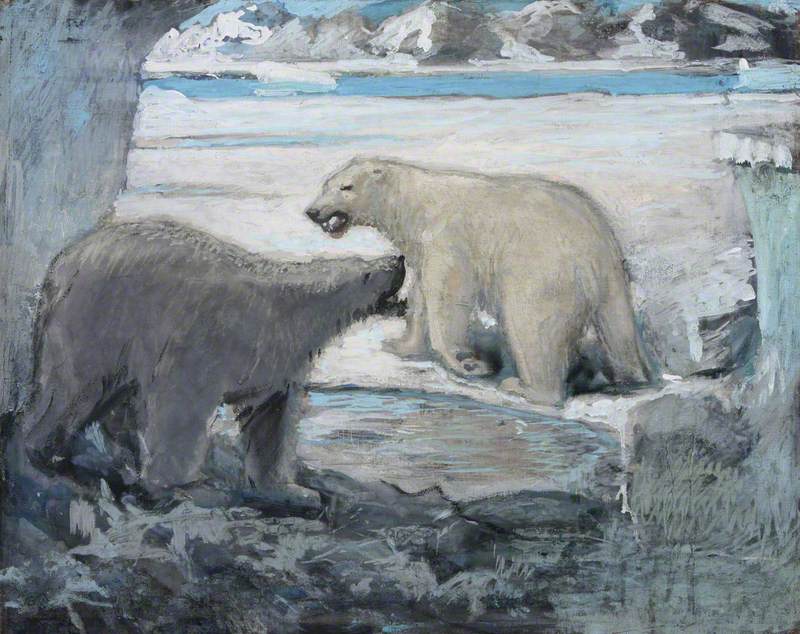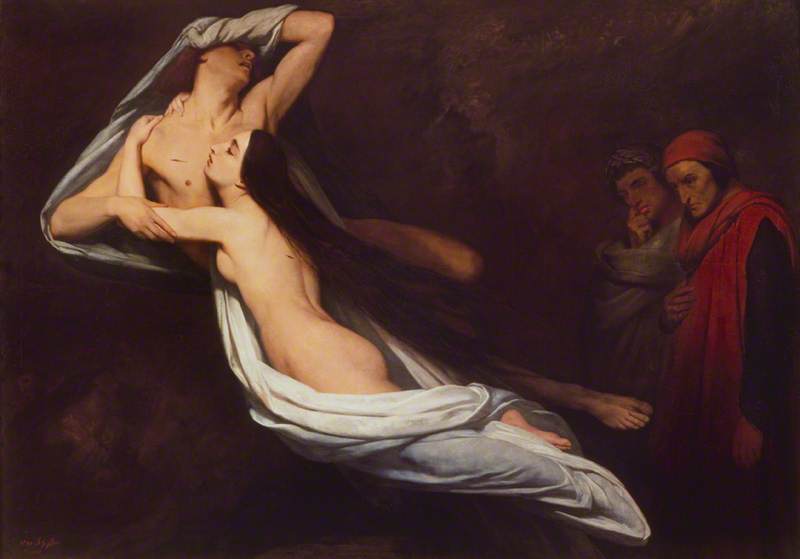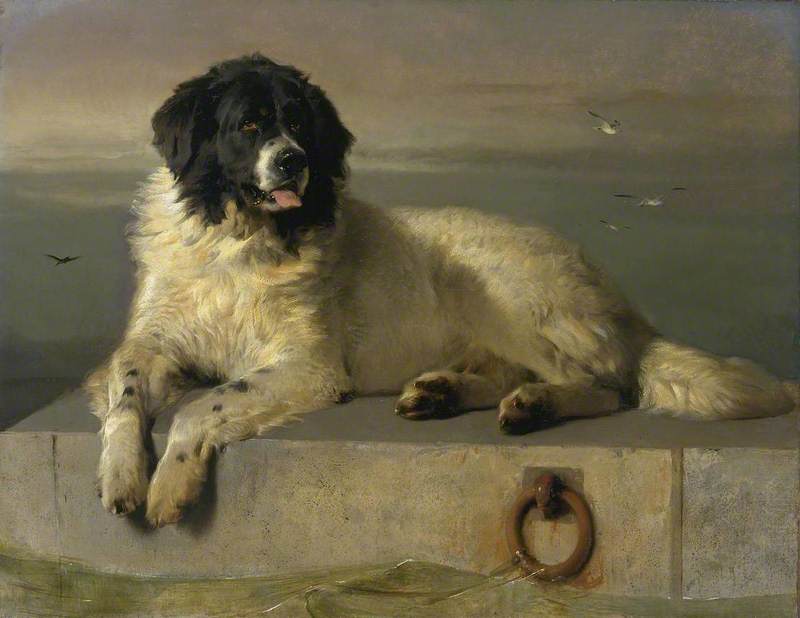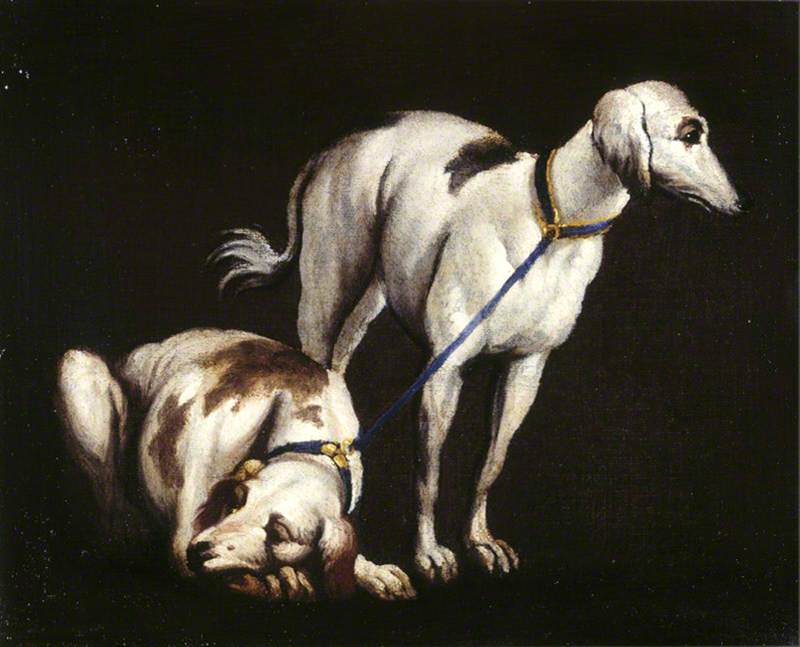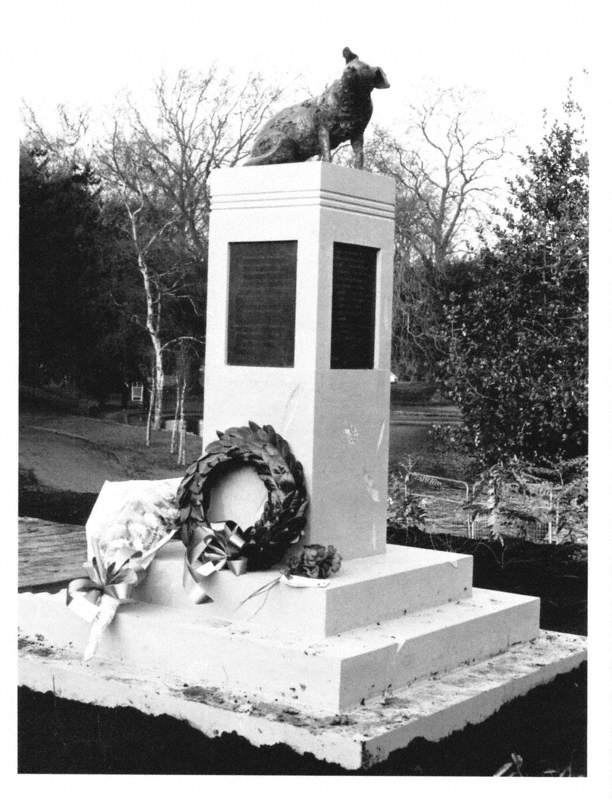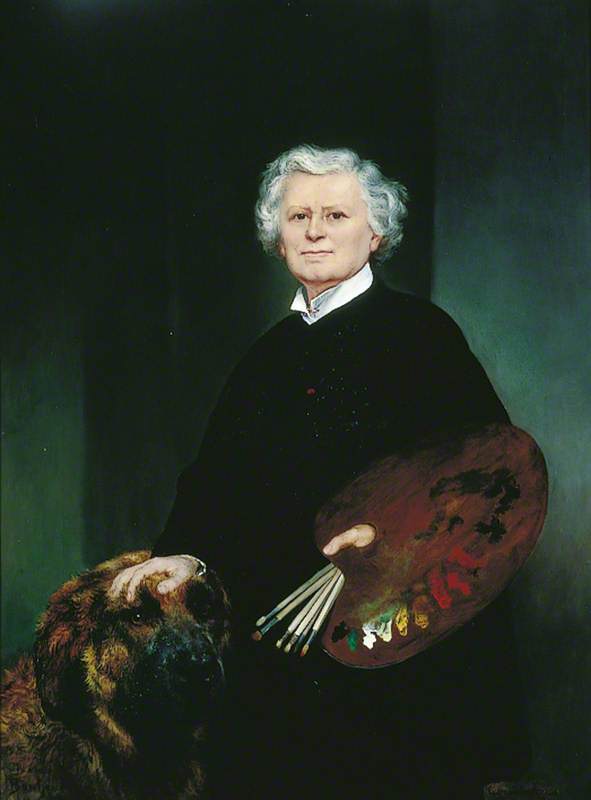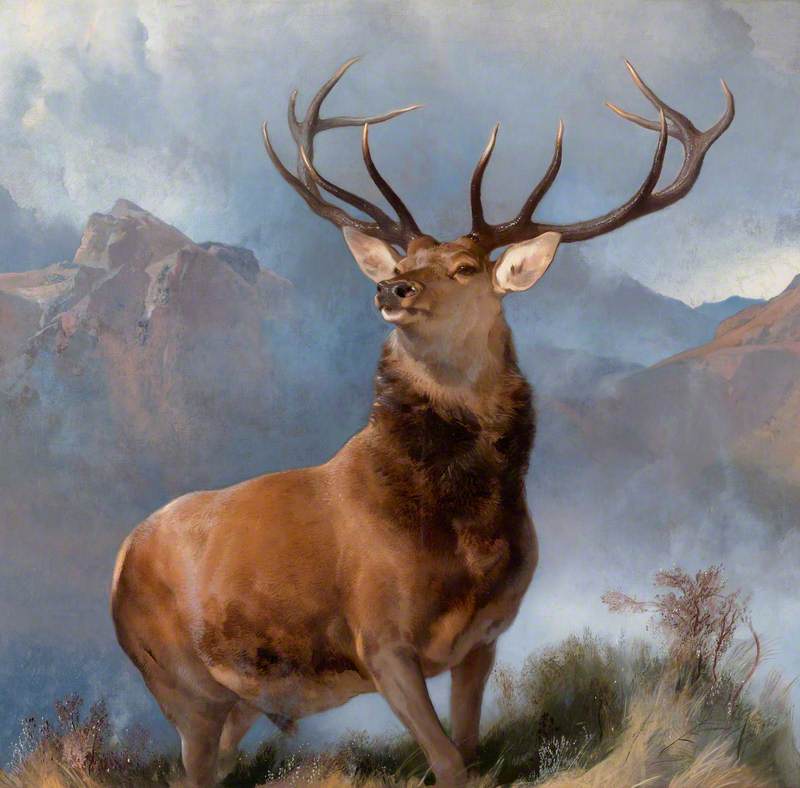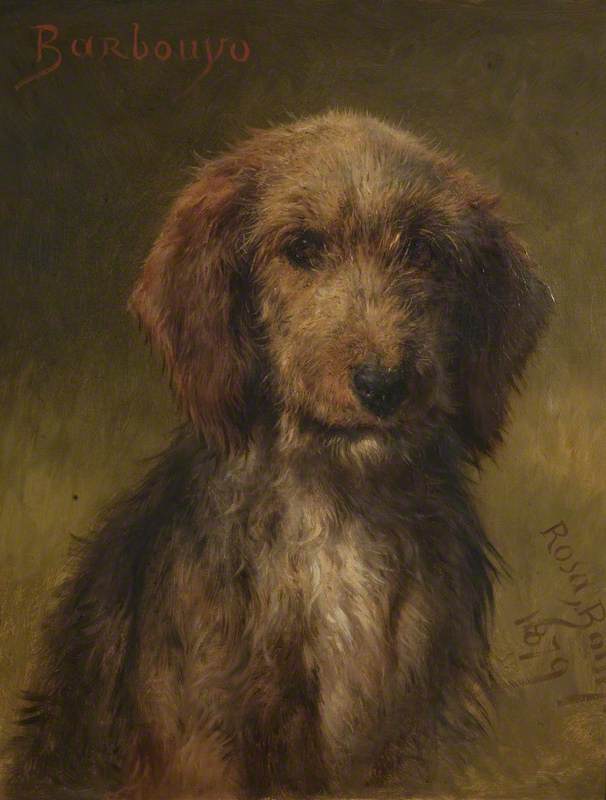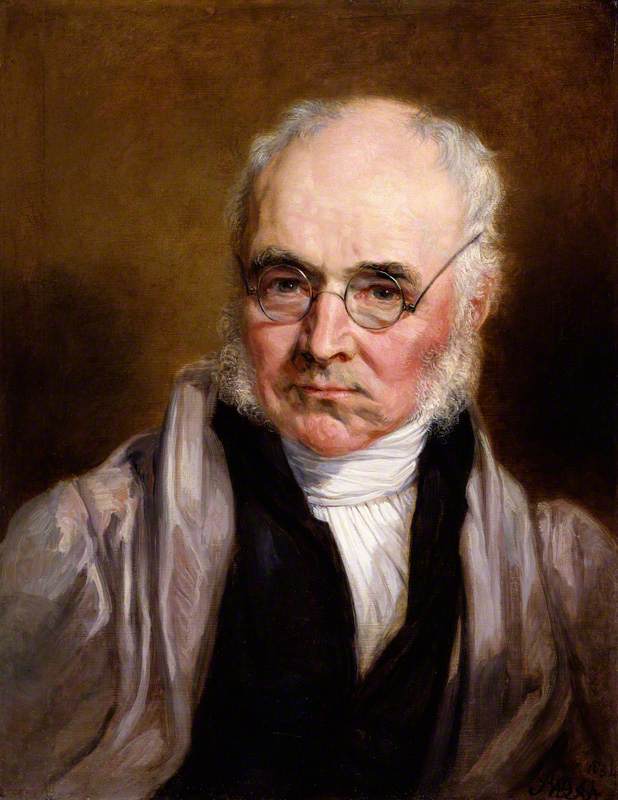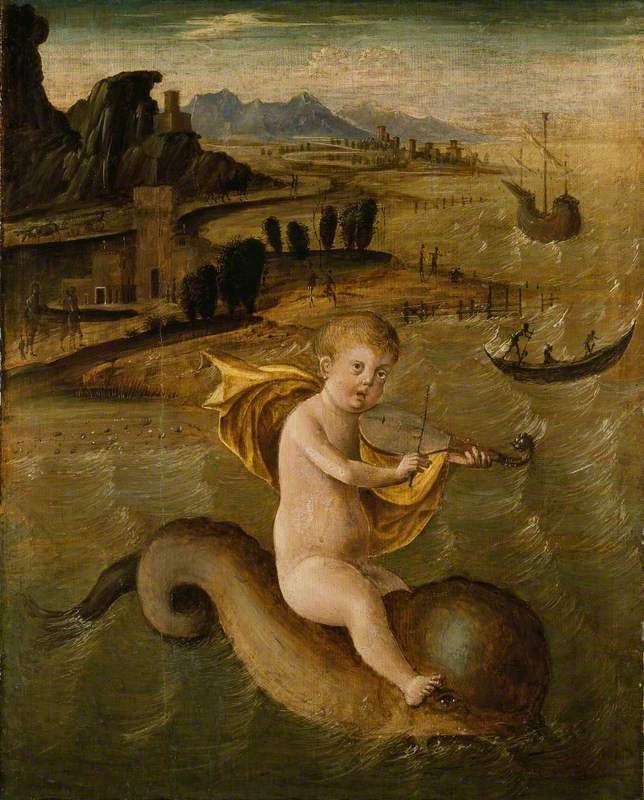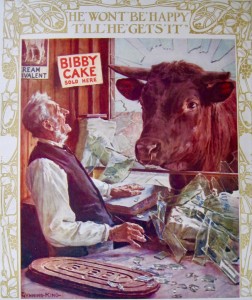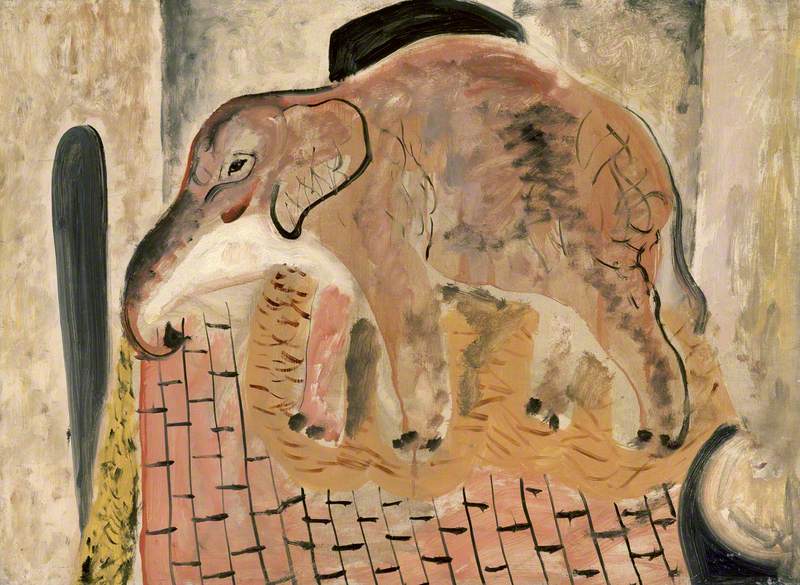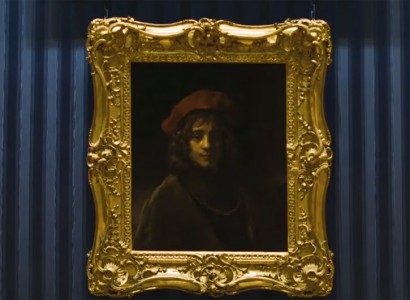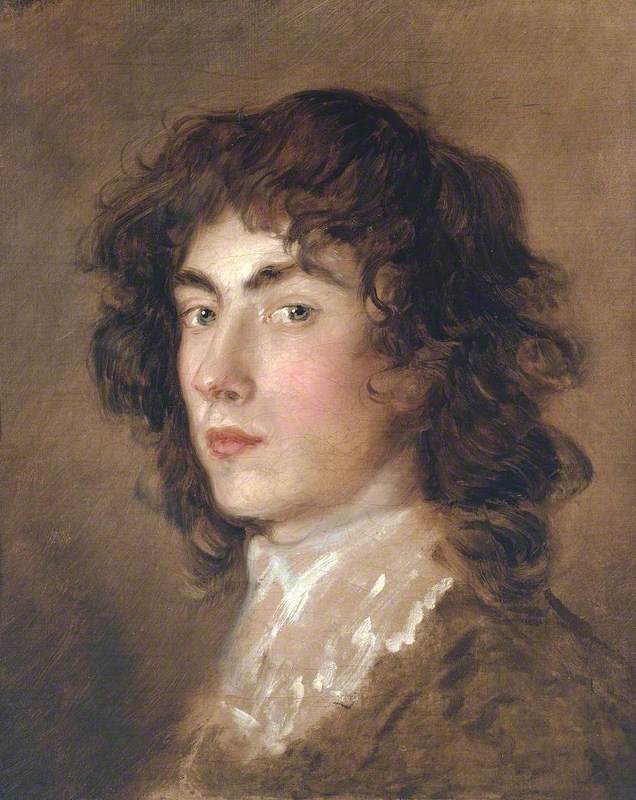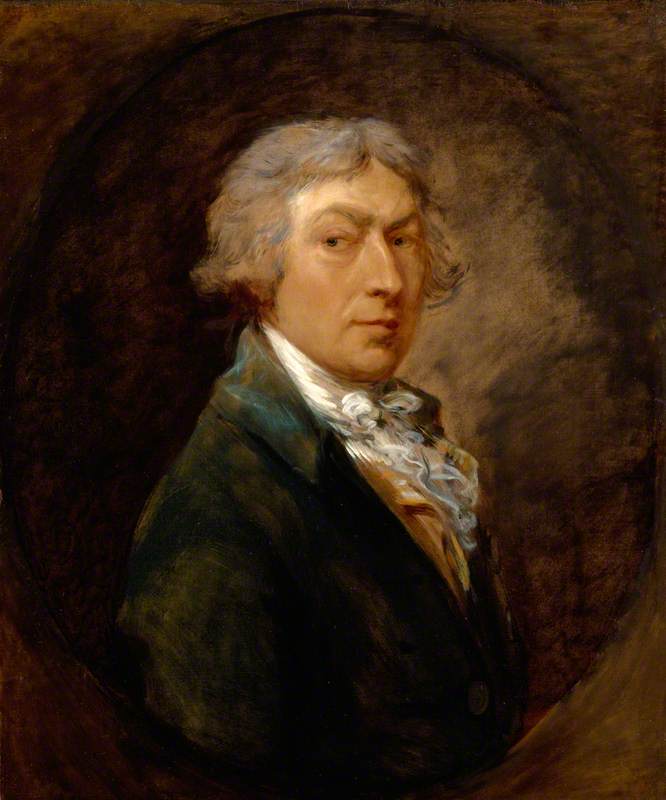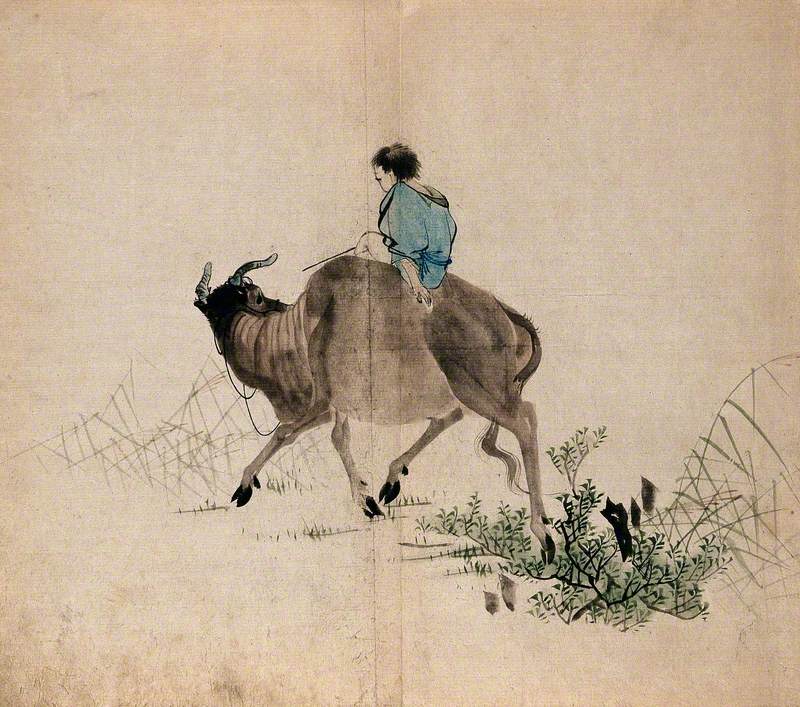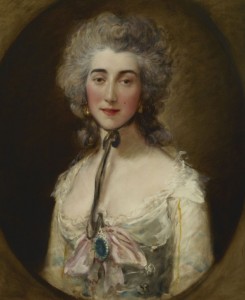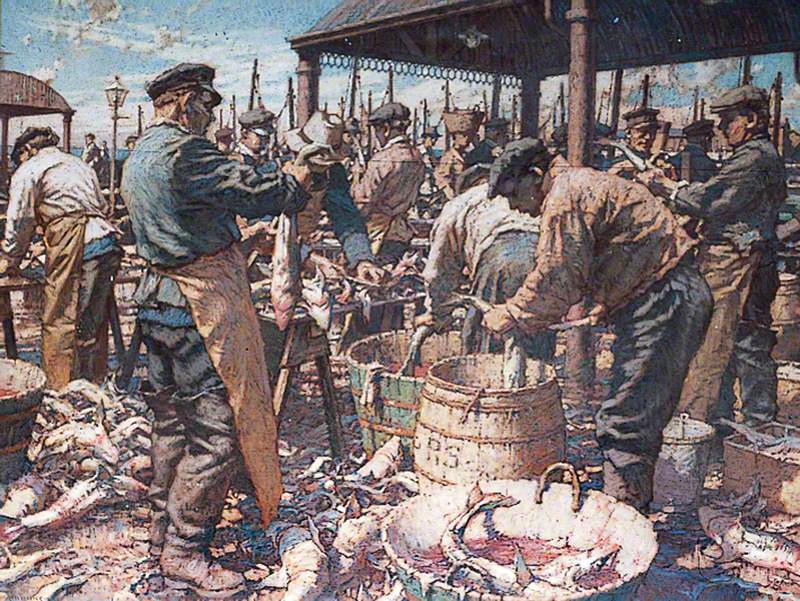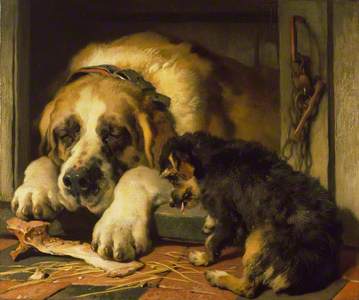Since being domesticated from wolves thousands of years ago, dogs have been our faithful and fearless companions. From ancient cave paintings to David Hockney's colourful canvases, we have used art to celebrate the unique bond we have formed with canines. On 29th March 2023, The Wallace Collection opened the first-ever major exhibition dedicated to portraits of dogs, and only dogs (humans are nowhere to be seen). The show contains over 50 outstanding artworks, drawn exclusively from British collections, which explore our story with dogs through eight thematic sections. Here are a few highlights.
Artists have long studied the forms and behaviours of dogs and interpreted them through a variety of materials. The Romans were some of the first to do so through sculpture. The Ashmolean Museum's A Dog lying on a Ledge, painted by an unknown Genoese artist during the mid-seventeenth century, is a wonderfully sensitive tribute to the humble street dog. Its highly realistic appearance, and the emotional intensity of the darkened atmosphere surrounding it, suggest the artist developed a close connection with the dog through hours of close looking.
In contrast to the Ashmolean's stray, some dogs have had the privilege of being the confidants of the crowned and coroneted of Europe. Particularly in Britain, these noble owners looked to commemorate their canines on canvas. George Stubbs led the way in creating portraits that captured – with scientific precision – the anatomical characteristics of those dogs that worked landed estates. The Usher Gallery's A Clumber Spaniel, dated 1784, shows a muscular dog, poised and ready to leap into action. Many of the dogs Stubbs depicted, including this spaniel, were newly bred to perform specific roles, meaning his portraits are essential to understanding breed history.
Beyond capturing naturalistic likenesses, dog portraits can also carry great meaning. Edwin Landseer was a master animal painter in the nineteenth century and is predominantly recognised for his skill in infusing dog portraits with symbolism. One such painting is Doubtful Crumbs in The Wallace Collection, dated 1858–1859. Alluding to Poor Lazarus from the Parable of Luke, it shows a scrawny terrier longing for a bite of the meal enjoyed by a dozing mastiff. This symbolism would not have been lost on Victorian reformists, who were acutely aware of social inequality and wished to improve the welfare of impoverished urban workers.
Dog portraits can also form intensely personal tributes to beloved pets. Toy dogs, miniature breeds treasured solely for their company, have frequently been depicted in such ways, especially in eighteenth-century France. Dog of the Havana Breed, which normally resides at The Bowes Museum, was painted by Jean-Jacques Bachelier in 1768. In it, he has expertly depicted a pampered pooch, who appears to have made quite a mess alongside its luxurious velvet kennel. It is tempting to imagine a dog like this belonging to Madame de Pompadour or Marie-Antoinette.
Throughout history, artists have formed particularly close relationships with dogs, including Thomas Gainsborough. He formed a special connection with his spaniel and collie, Tristram and Fox, who he painted about 1775–1785. Details like their twinkling eyes and dignified positioning suggest Gainsborough saw them almost as family, a view strengthened by the fact that the painting hung, pride of place, above the chimneypiece in his house. On occasion, the artist impersonated Fox when writing letters of apology to his wife following their disagreements, addressing them to Tristram. Fox would then duly deliver the letters to the other dog.
Queen Victoria's Spaniel, 'Tilco' (d.1850)
1838
Edwin Henry Landseer (1802–1873) 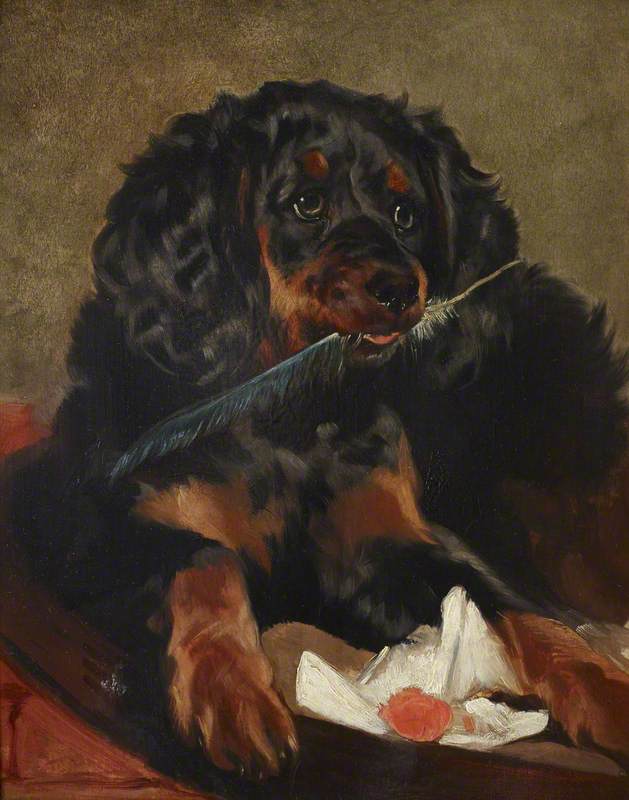
The artist Landseer, as well as running a studio producing allegorical dog portraits, also formed a close association with Queen Victoria and Prince Albert. He gave the couple art lessons and undertook commissions to paint their canine courtiers. One such work was his painting, made in 1838, of Tilco (now in the care of the National Trust), one of the queen's favourite spaniels. He appears to have caught the dog in a moment of mischief, as if it has just dashed through the royal apartments and made off with a quill and letter. Using his extraordinary ability to humanise dogs, Landseer shows Tilco holding the pen between its teeth and the paper between its paws, as though mimicking its royal owner tending to her correspondence.
The close bonds we form with dogs in life mean that, following their deaths, we often experience overwhelming feelings of loss. Landseer, again turning his expert hand to conveying emotion through dog allegory, has skilfully translated the human process of grieving to a collie in his 1837 work The Old Shepherd's Chief Mourner, which is in the collection of the V&A. In a deeply moving scene, the dog rests its heavy head on the coffin of its master, as if contemplating the thought of life alone. Abandoned by human mourners, the dog remains a faithful companion – a touching parallel to the famous Greyfriars Bobby.
Canine portraiture, just like the dogs it depicts, comes in all shapes and sizes. The Wallace Collection's exhibition looks to reveal its diversity and versatility – how it can do everything from conveying moral imagery to praising the athletic prowess of a working dog. However, it also seeks to show how all dog portraits have one thing in common, and that is their desire to celebrate the distinct relationship we have with our four-legged companions, along with those things that endear them to us – their intelligence and independence of spirit.
Alexander Collins, Assistant Curator of 'Portraits of Dogs: From Gainsborough to Hockney' at The Wallace Collection
'Portraits of Dogs: From Gainsborough to Hockney' is showing at The Wallace Collection until 15th October 2023. The exhibition is accompanied by a richly illustrated catalogue, which is available for purchase in the museum's shop and online
